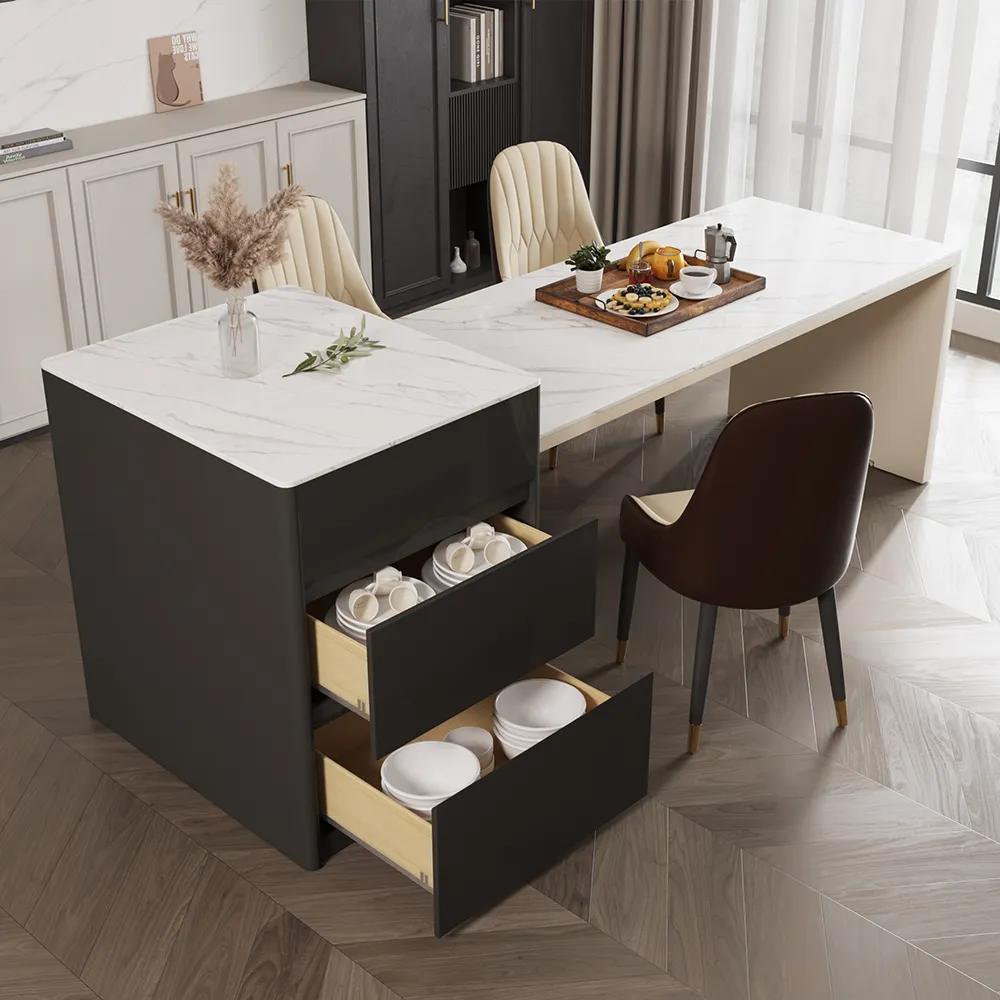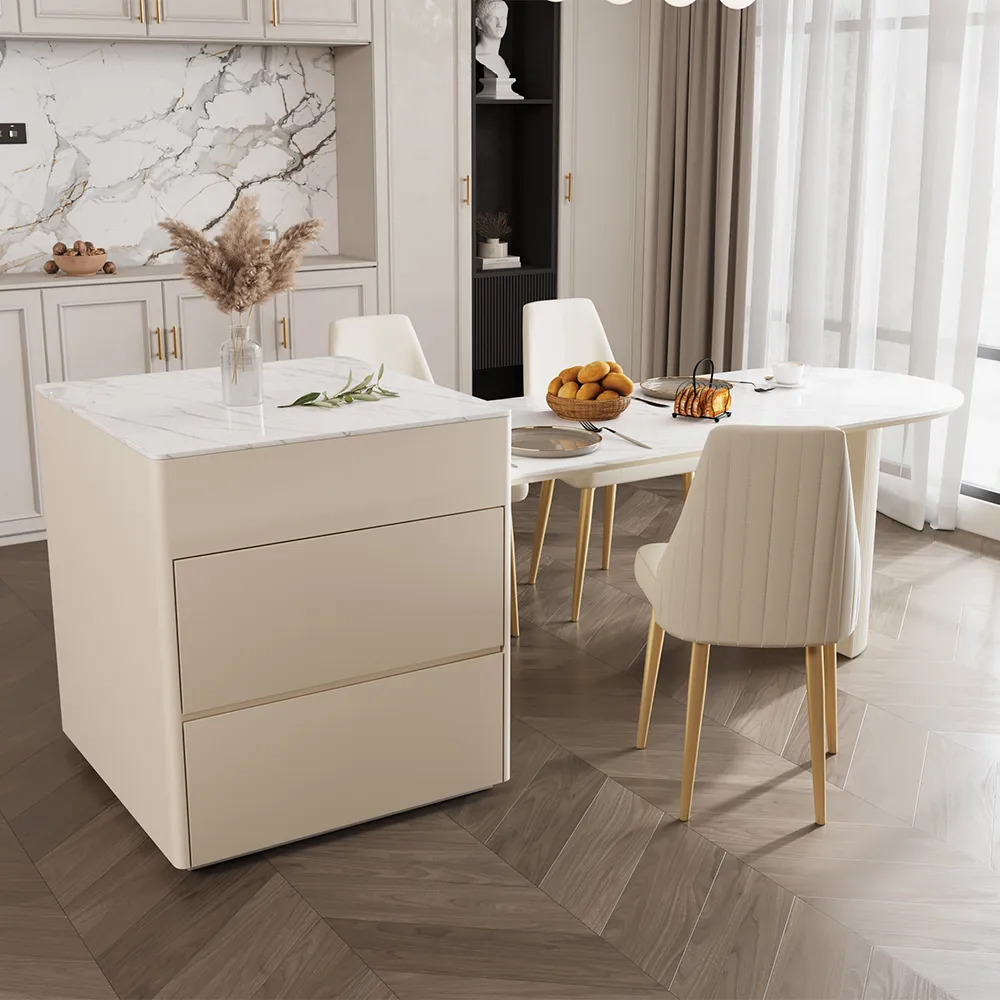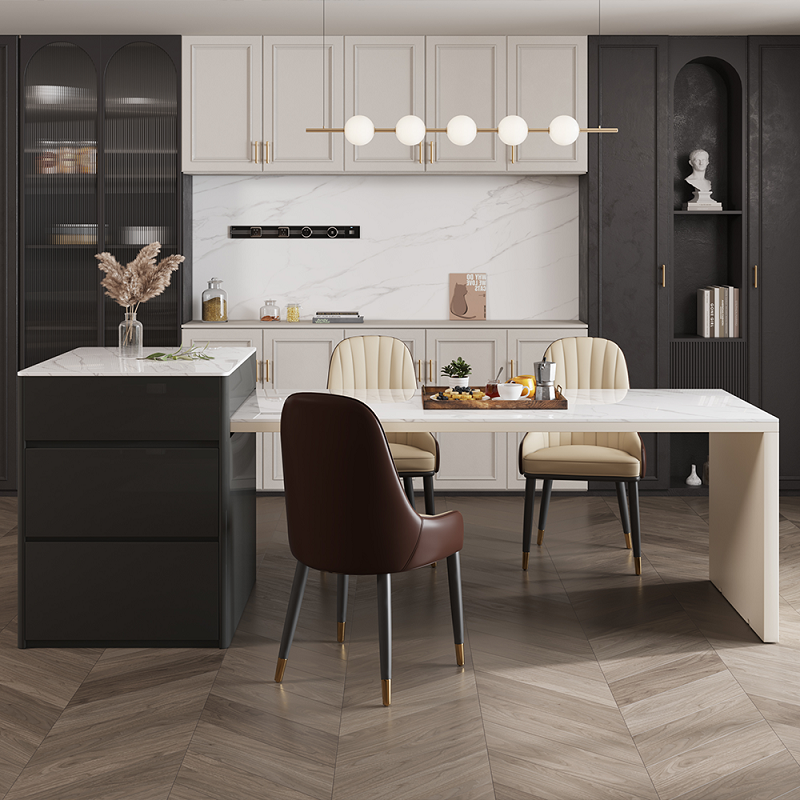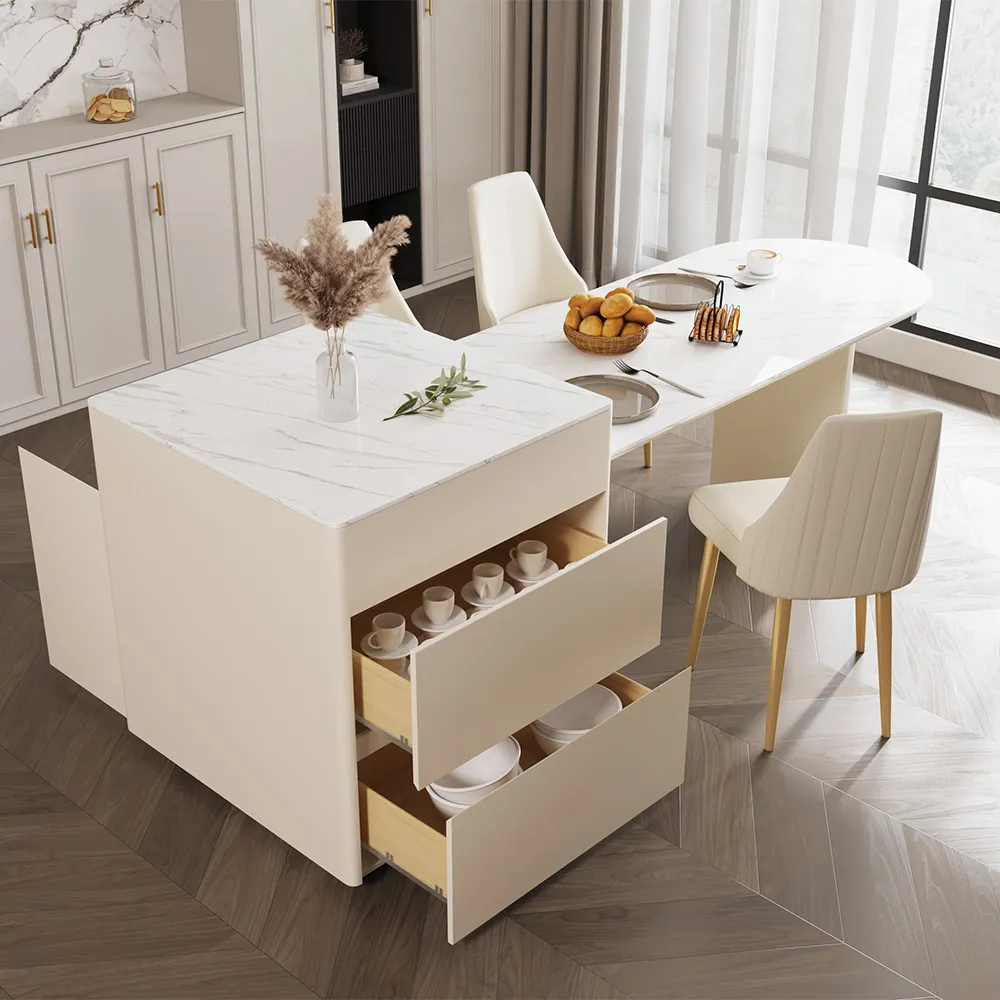Unlock the potential of your kitchen and dining space with innovative Kitchen Island ideas. From optimizing workflow to enhancing aesthetics, a well-designed island can be a game-changer. But, is it suitable for your unique kitchen and dining room? In this exploration of Kitchen Island Ideas, we delve into creative solutions that blend functionality and style, helping you determine if this versatile addition is the perfect fit for your culinary haven.
People Also Read:
Low Maintenance Dining Tables: Your Guide to Effortless Table Care
What is a kitchen island?
A kitchen island is a versatile and functional piece of furniture located in the center of a kitchen. Serving as a focal point, it typically features countertop space, storage cabinets, and often incorporates seating. The primary purpose of a kitchen island is to provide additional workspace, storage, and a communal area for various kitchen activities.

Here are the top five recommended placements for a kitchen island, each offering unique advantages in terms of functionality and aesthetics:
- Central in the Kitchen:
–Advantages:
- Creates a balanced and efficient workspace.
- Allows easy access from all sides, promoting fluid movement.
- Ideal for larger kitchens with ample space.
–Considerations:
- Ensure there is sufficient clearance around the island to prevent crowding.
- Adjacent to the Work Triangle:
–Advantages:
- Optimizes workflow by providing additional workspace near the primary cooking and preparation areas.
- Enhances efficiency in the kitchen.
–Considerations:
- Maintain proper spacing to avoid disrupting the flow of the work triangle.
- Against the Wall:
–Advantages:
- Maximizes counter space in smaller kitchens.
- Can feature wall-mounted storage or a breakfast bar for added functionality.
–Considerations:
- Ensure the island is at a comfortable working height, especially if used for food preparation.
- As a Room Divider:
–Advantages:
- Defines distinct zones in open floor plans.
- Maintains an open feel while providing a functional and stylish separation between the kitchen and adjacent areas.
–Considerations:
- Choose a design that complements both the kitchen and living/dining spaces.
- Integrate with a Dining Table:
–Advantages:
- Creates a multifunctional space for both cooking and dining.
- Particularly useful in smaller kitchens where a separate dining table may not be practical.
–Considerations:
- Ensure the height and design accommodate both cooking and dining needs.
What is the ideal kitchen size with an island?
The ideal kitchen size for incorporating a kitchen island depends on several factors. Generally, a kitchen should be spacious enough to allow for the island without making the space feel cramped. A minimum of 10 square feet is recommended for a small kitchen island, while larger islands may require at least 25 square feet or more. Adequate clearance around the island, typically 3 feet, is essential to ensure smooth traffic flow and easy maneuverability. Leaving enough space is conducive to a good kitchen island idea.

What can be used as a kitchen island?
Kitchen islands come in various styles and materials, providing flexibility in design and functionality. Common materials include:
- Wood: Wooden kitchen islands offer a warm and classic look. They can be customized in various finishes to match the kitchen decor.
- Sintered Stone: As a low maintenance material for dining table top, it is also a great choice for kitchen island top. It is resistant to heat and stain, so it is suitable for kitchen to hold the just-cooked meals.
- Granite or Quartz: Stone countertops are popular for their durability and aesthetic appeal. They add a touch of luxury to the kitchen and are resistant to scratches and heat.
- Stainless Steel: Ideal for modern and industrial kitchens, stainless steel islands are durable, easy to clean, and provide a sleek, contemporary appearance.
- Butcher Block: For a rustic or farmhouse vibe, butcher block islands are an excellent choice. They are often made of thick wooden slabs and offer a practical surface for chopping and food preparation.

FAQ:
Is it cheaper to buy or build a kitchen island?
The decision to buy or build a kitchen island depends on individual preferences, budget constraints, and the desired level of customization. Here’s a breakdown:
Buying a Kitchen Island:
- Pros: Convenient and time-saving, as pre-made islands are readily available in various styles and sizes. Often comes with warranties and guarantees.
- Cons: Limited customization options. May be more expensive, especially for high-end or custom designs.
Building a Kitchen Island:
- Pros: Allows for full customization to suit specific needs and design preferences. Can be more cost-effective for those with DIY skills.
- Cons: Requires time, effort, and skill. May not come with warranties or guarantees.
Consideration of budget, available time, and desired features will guide the decision between buying and building a kitchen island.
Are kitchen islands still fashionable?
Yes, kitchen islands remain fashionable and continue to be a sought-after feature in modern kitchens. They offer a perfect blend of functionality and aesthetics, contributing to the overall design and efficiency of the space. The trend has evolved to accommodate various styles, from traditional to contemporary, ensuring that kitchen islands remain versatile and adaptable to different design preferences.
In contemporary kitchens, islands often serve as multipurpose spaces, incorporating features such as built-in appliances, additional storage, and stylish seating arrangements. The enduring popularity of kitchen islands is a testament to their ability to enhance both the visual appeal and practicality of a kitchen.

How to decorate kitchen island?
Decorating a kitchen island involves a balance between functionality and aesthetics. Here are some kitchen island ideas to elevate the style of your kitchen island:
- Display Functional Accessories: Arrange kitchen tools, cutting boards, or utensil holders in an organized and visually pleasing manner.
- Add Greenery: Incorporate potted herbs or small indoor plants to bring a touch of nature to your kitchen. This not only adds freshness but also enhances the visual appeal.
- Use Stylish Containers: Opt for decorative containers or baskets to store items on the island. This adds a touch of style while keeping the space organized.
- Consider Pendant Lighting: Install pendant lights above the kitchen island to create a focal point and provide adequate task lighting. Choose fixtures that complement the overall design of the kitchen.
- Seasonal Decor: Change the decor with the seasons to keep the kitchen island visually interesting. Consider seasonal fruits, flowers, or themed decorations to add a personal touch.
- Incorporate Artwork: Display artwork or decorative items on the island to infuse personality and character into the kitchen. Choose pieces that resonate with your style and the overall kitchen theme.